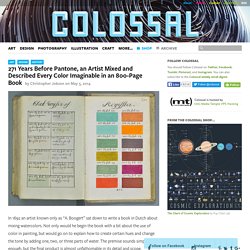

You just pluck it... How To Grow An Avocado Tree. Thought it would come in handy to you guys. Kids Cry When Then Find Out What Meat Is. Let’s be real: Kids have NO filter.

Sure, they may say the darndest things, but their honesty is what makes them so great! And the best part of all is that their words come from a pure heart. <3 These kids clearly don’t want to eat meat, and who can blame them? Why would people want to support suffering once they’ve made the connection that the chicken they cheer on in their favorite animated film is the same as the animal they’re about to be served for dinner? You might recognize Luiz Antonio. His video shows perfectly that having compassion for animals isn’t something that we’re taught—it’s deeply rooted in all of us. Referring to killing animals, this little lady cries to her mom, “You can’t!” And this one is ready to school ya on why she won’t eat fish.
“Would you like if someone ate you?” “I really don’t want to eat the animals!” This kid can’t imagine letting his goat be sacrificed, and we can’t, either! Get started on your own vegan journey! Tags: Cute, Cuteness, Food, Parents. An elephant got caught on security camera picking up trash and putting it in a garbage can. AllYouCanRead.com - The best selection of magazines and news sites from 200 countries.
Do you really know what the world looks like? Das machen Partydrogen mit deinen Augen. Grundlegend manipulieren die Stoffe in Drogen, die dich entspannt, glücklich oder einfach nur sehr wach machen, nicht nur die Neurotransmitter in deinem Gehirn, sondern können sich auch auf physiologische Prozesse in deinem Körper auswirken.

Darunter fallen beispielsweise auch die Muskeln in deinem Auge, die dafür zuständig sind, deine Pupillen zu vergrößern (um beispielsweise mehr Licht aufzunehmen) oder sie zu verkleinern. KokainMDMAAmphetaminenMydriasisMiosisRequiem for A DreamKritik Wie sehr hängen aber der Konsum Drogen und sichtbare Veränderungen an den Augen konkret zusammen? Wir wollten es nach unserem fotografischen Feldversuch genauer wissen und haben mit ein paar Leuten gesprochen, die sich mit dem Mythos „Drogenaugen" ein bisschen genauer auskennen müssten. „Eine Veränderung an den Pupillen kann ein Indiz für Drogenkonsum sein, muss es aber nicht", erklärt Heike Krause vom Notdienst für Suchtmittelgefährdete und –abhängige in Berlin.
Most Dangerous Animal. You think you're cool huh? Good tips: 3 ways to stay awake. 640px-Mythstammbaum_reloaded.svg.png (PNG Image, 640 × 824 pixels) 33 Genius Three-Ingredient Recipes. Posted by on Mar 24, 2014 in Food Hacks | 12 comments If you are looking for some New recipes, some new ideas that will make you happy, than you are on the right place.

These 33 easy and amazing food recipes will make you happy and you will enjoy in your food. Deftdigits. Knowing every note on the guitar is a challenge unique to the instrument.

A saxophone has only one way to finger each note, while a guitar usually has a few different strings and four fingers to choose from. String a few notes together and the permutations of how to play them will wreck your brain. Pianists have a similar problem with ten available digits, but you can memorize the notes on a keyboard in a matter of minutes; the same pattern of white and black keys repeats every octave. The challenge with navigating the guitar fretboard is its two-dimensional layout. It’s a matrix, while nearly every other instrument has a linear path of notes from the bottom to the top of its range. Why Know the Whole Fretboard? If you don’t know every single note on the guitar cold, without hesitation, then I highly recommend taking a little time to get that under your belt. The primary advantage to knowing every note on the fretboard is in creation. Helpful facts. Biggest lie.
Privacy Monitor Hack! Wow, how colorful! :) If Darth Vader had been a good father... No capes!!!! Heuteist.de - Welt-Nutella-Tag. 271 Years Before Pantone, an Artist Mixed and Described Every Color Imaginable in an 800-Page Book. In 1692 an artist known only as “A.

Boogert” sat down to write a book in Dutch about mixing watercolors. Not only would he begin the book with a bit about the use of color in painting, but would go on to explain how to create certain hues and change the tone by adding one, two, or three parts of water. The premise sounds simple enough, but the final product is almost unfathomable in its detail and scope. Spanning nearly 800 completely handwritten (and painted) pages, Traité des couleurs servant à la peinture à l’eau, was probably the most comprehensive guide to paint and color of its time.
According to Medieval book historian Erik Kwakkel who translated part of the introduction, the color book was intended as an educational guide. It’s hard not to compare the hundreds of pages of color to its contemporary equivalent, the Pantone Color Guide, which wouldn’t be published for the first time until 1963.